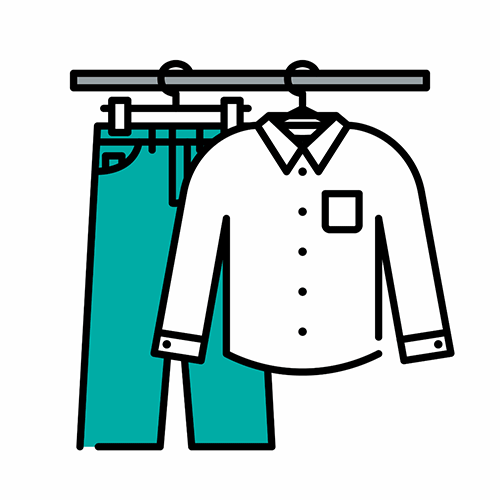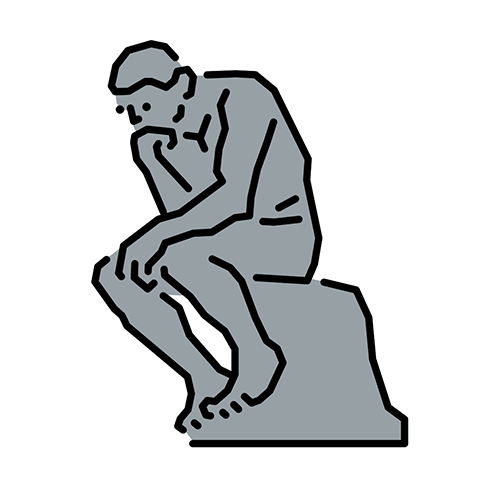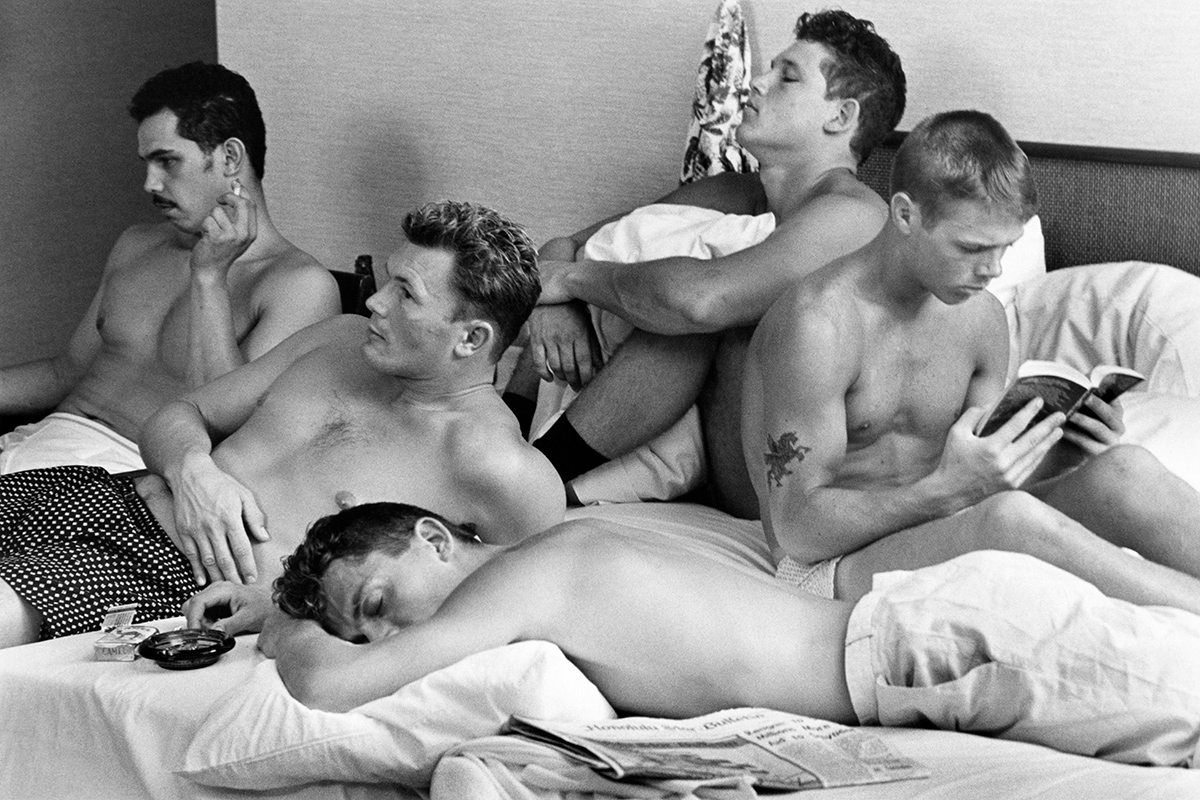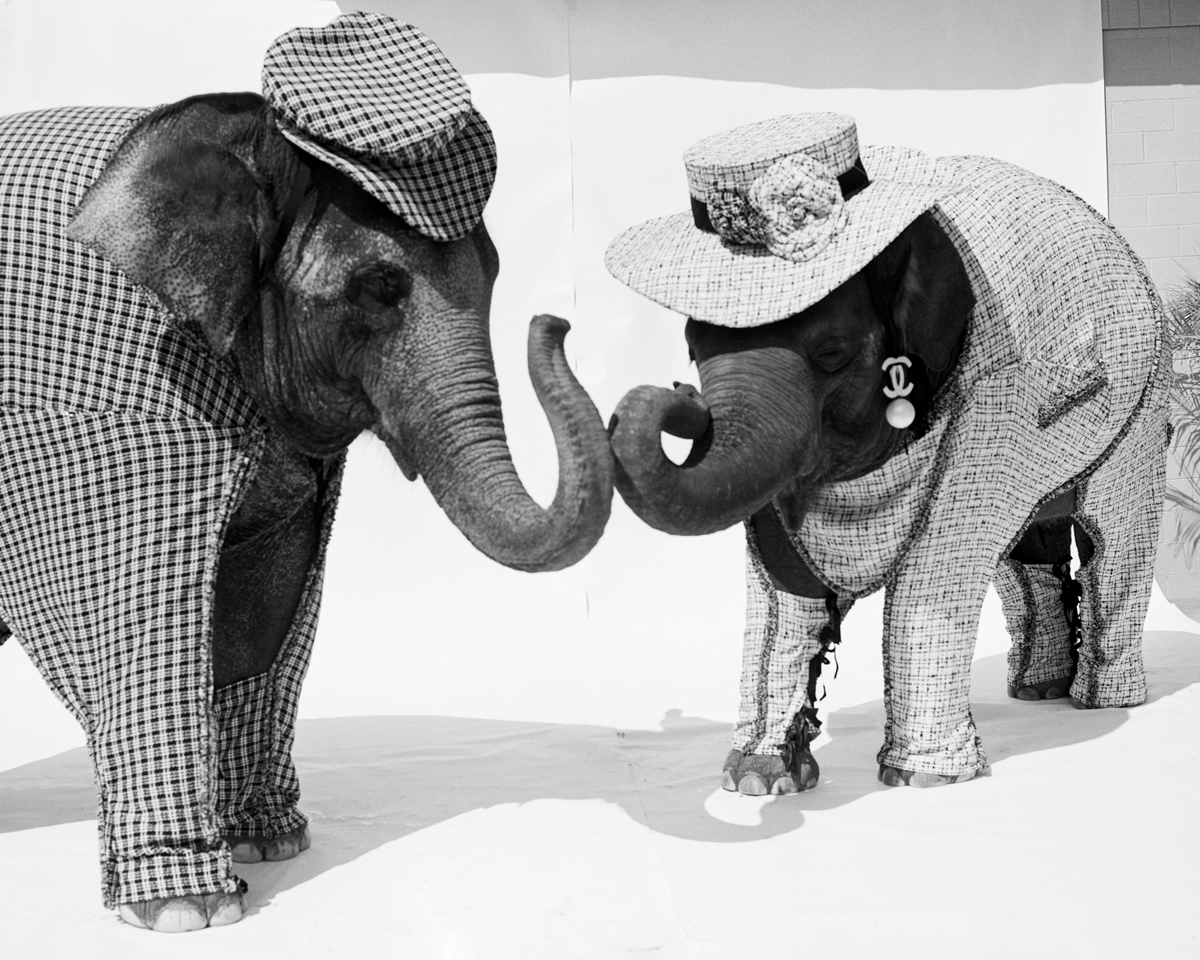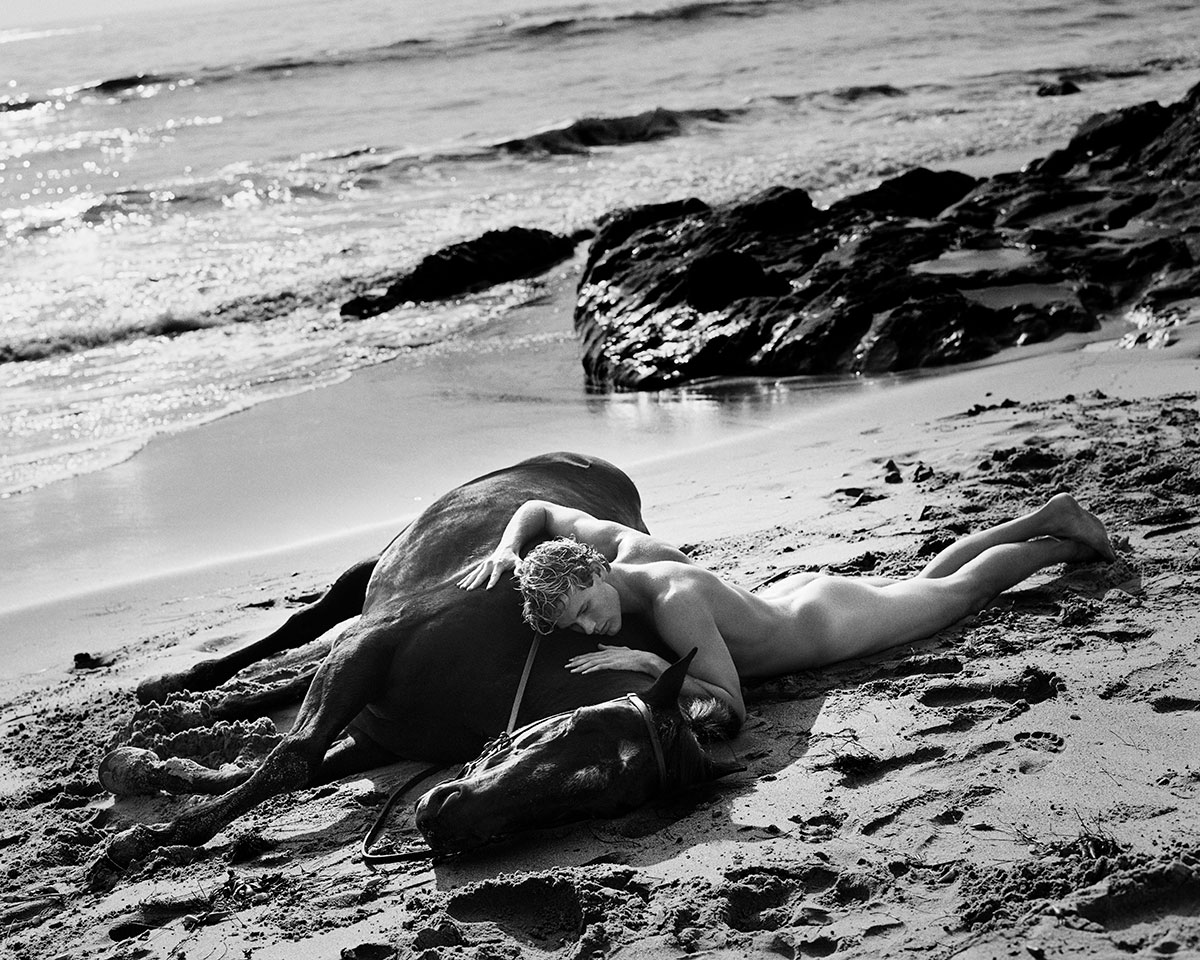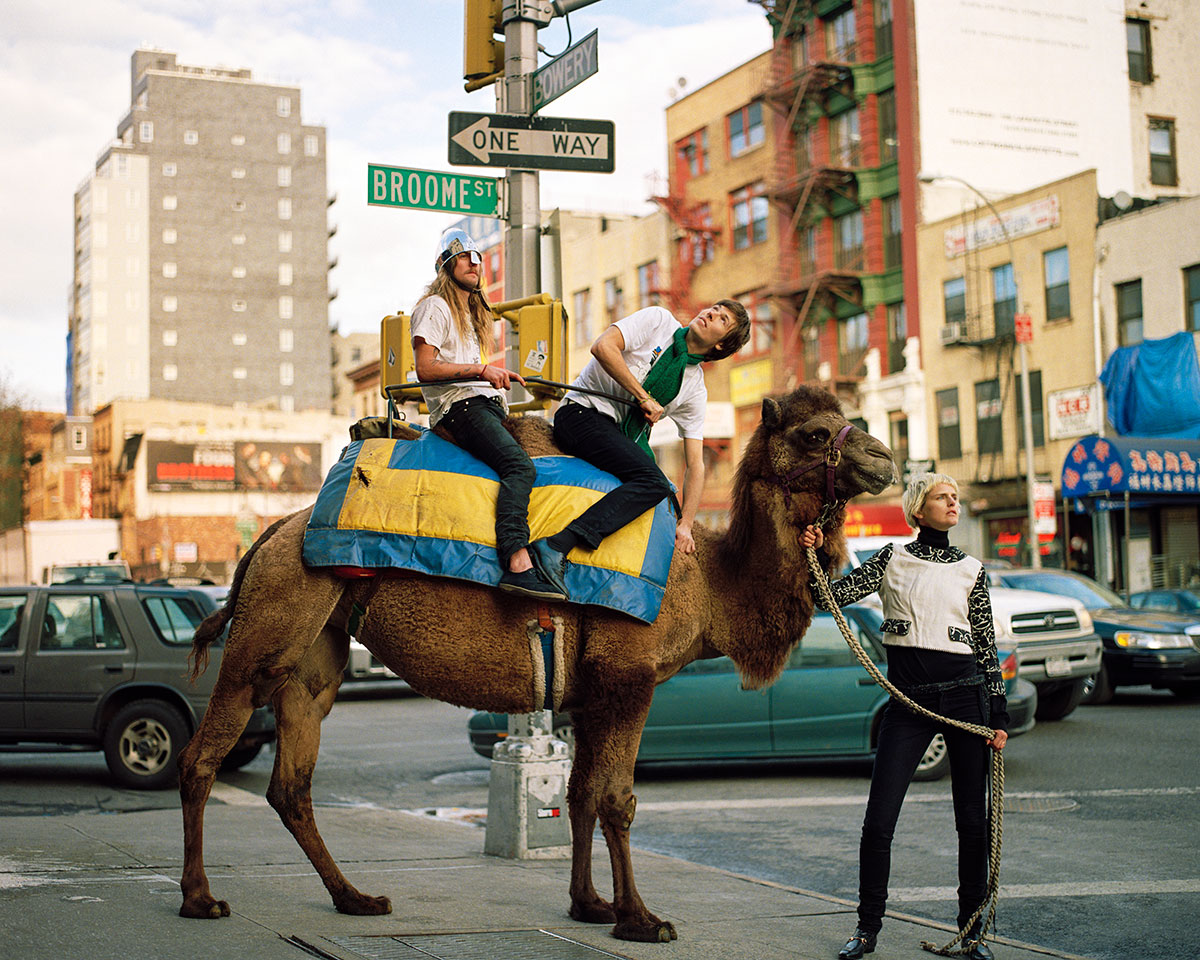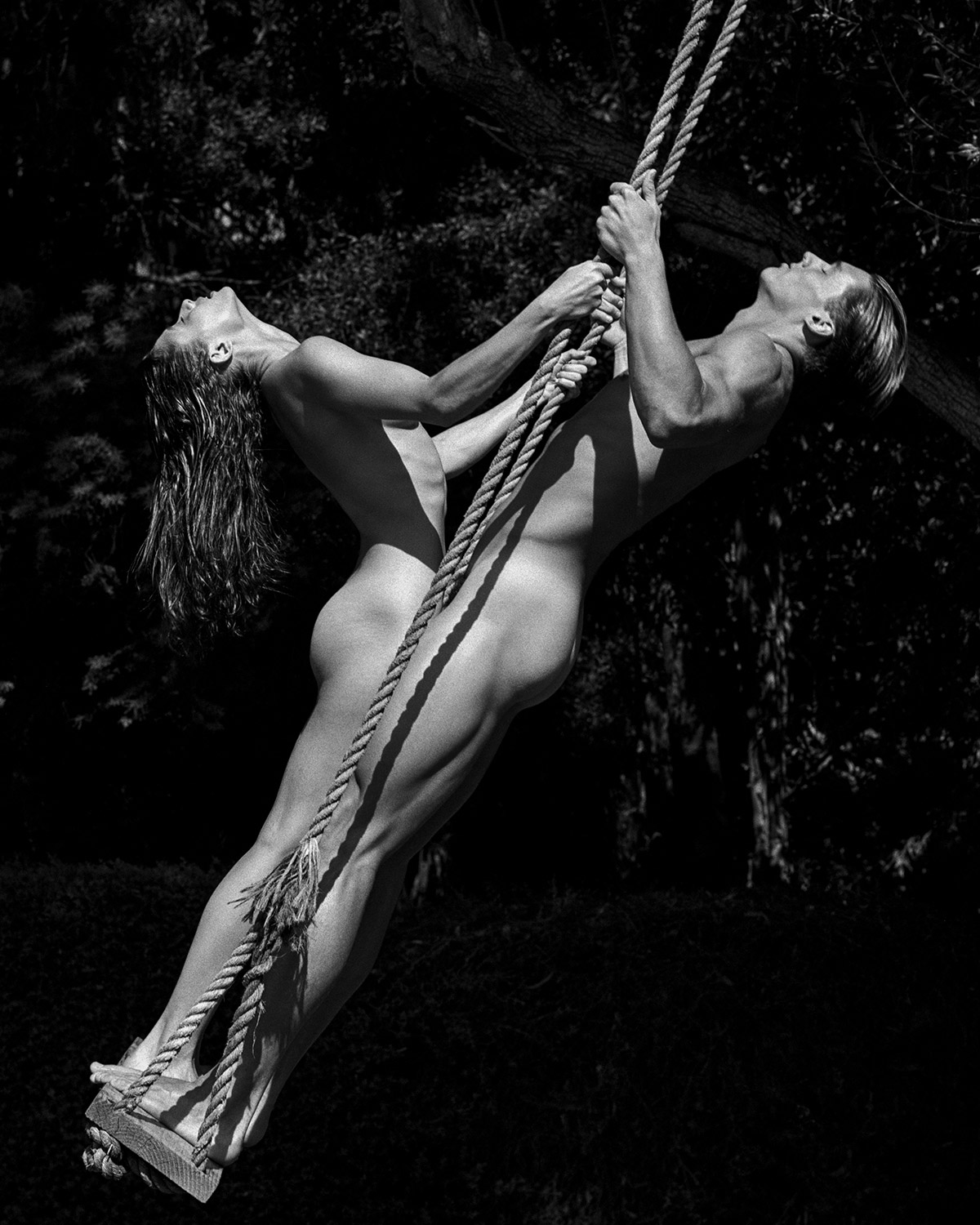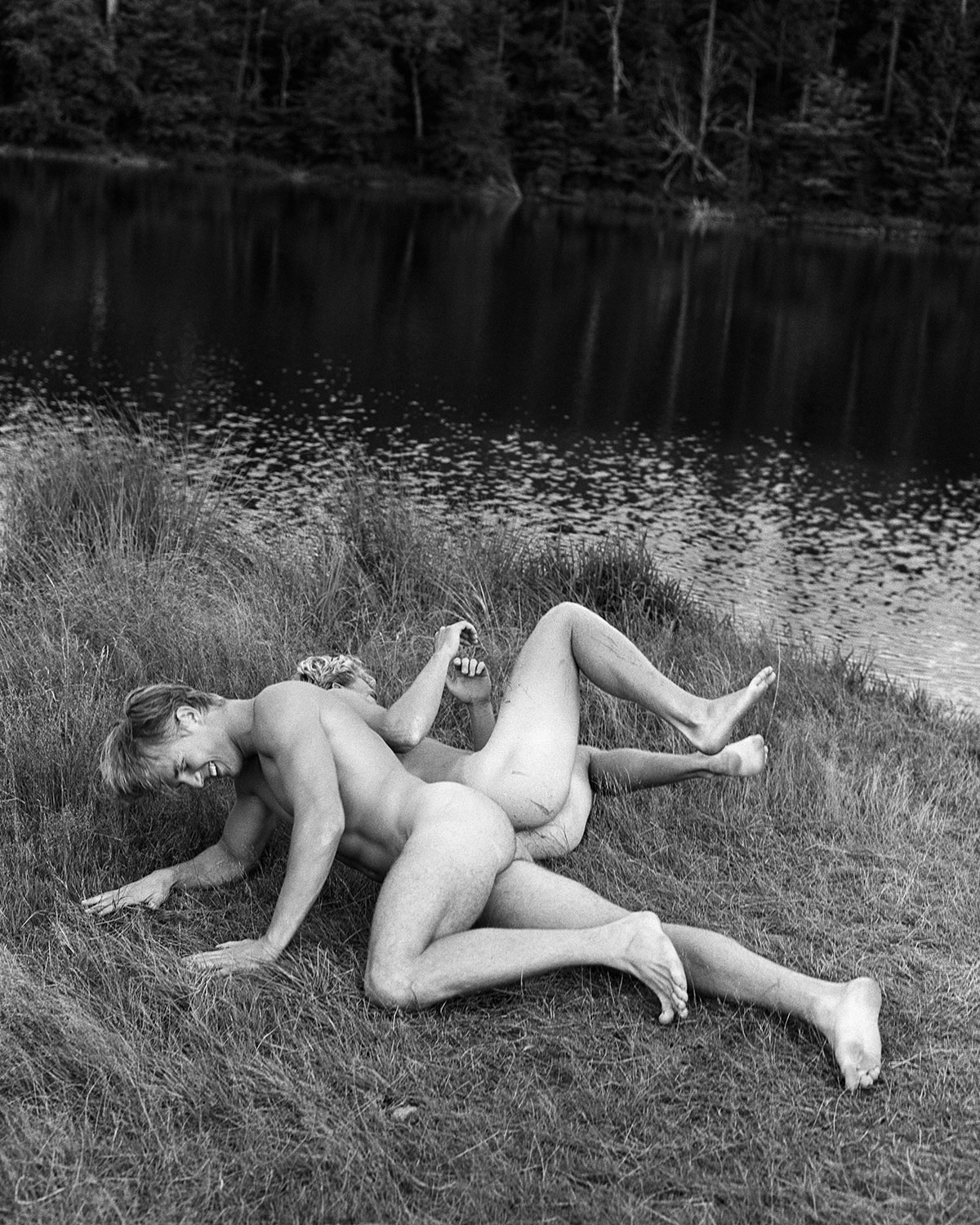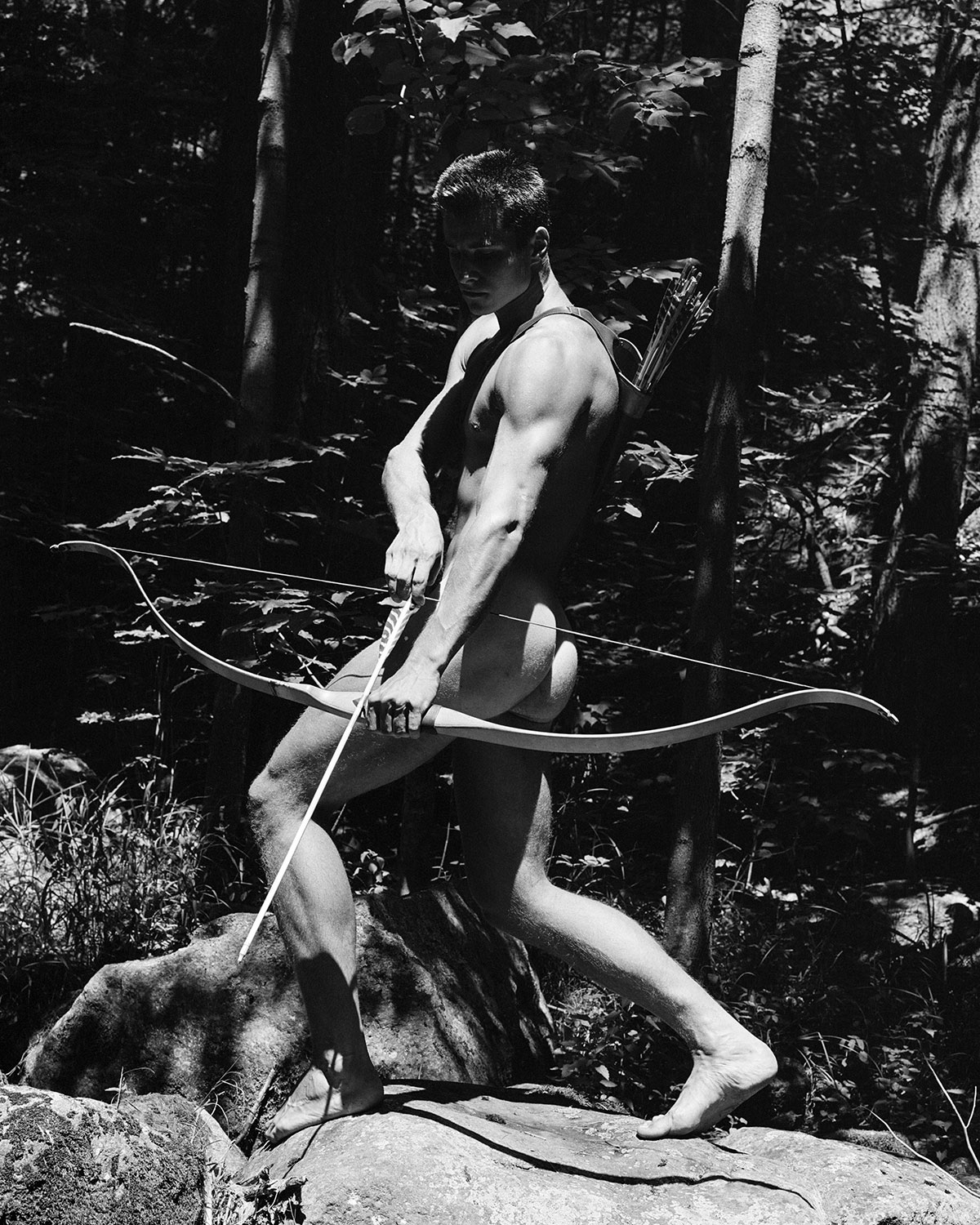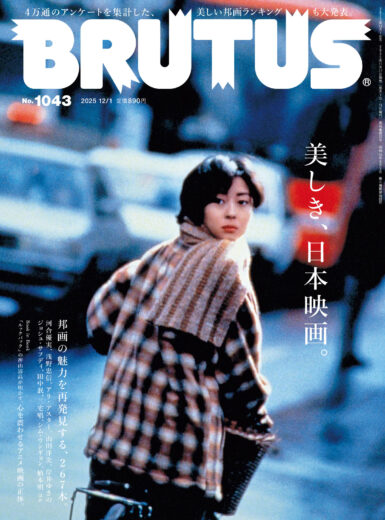“Do you have dogs?”, I was asked over Zoom by this photographer. “No, I used to, but not anymore”, I replied. “I’ve never had children, but I’ve had a lot of dogs in my life. Sometimes I lay in bed at night, and some are laying in my arms”, he winked. As we talked, the dogs kept coming to rub at his legs. He did not seem bothered, on the contrary, he laughed in delight.
This photographer is Bruce Weber, a living legend of the photography industry. Born in 1946 in Pennsylvania and raised in Ohio. He studied film production at New York University, studied photography at different photographers’ seminars, and has been active as a photographer himself since the late 1960s. Known for his major campaigns for Calvin Klein, Ralph Lauren, and Abercrombie & Fitch, as well as for his shoots for Vogue and Vanity Fair, Weber just released a monumental, career-defining photo book from Taschen this September. The book, called “My Education”, is as long as 564 pages and weights 3.4 kilograms. It is a retrospective collection showcasing the best images from his career spanning over half a century. Furthermore, the book opens with an episode set at the museum of the Lumière brothers, the inventors of cinema, and goes on to detail what Weber learned from the many master photographers he encountered. It not only serves as a record of his own life but also documents a certain period of photographic history. In fact, instead of “My Education” it could easily be called “Our Education”, considering the scale.
Weber rarely makes public appearances, so it took a while to arrange this interview. But the living legend spoke with remarkable candour about his career as a whole and his enduring love for photography.
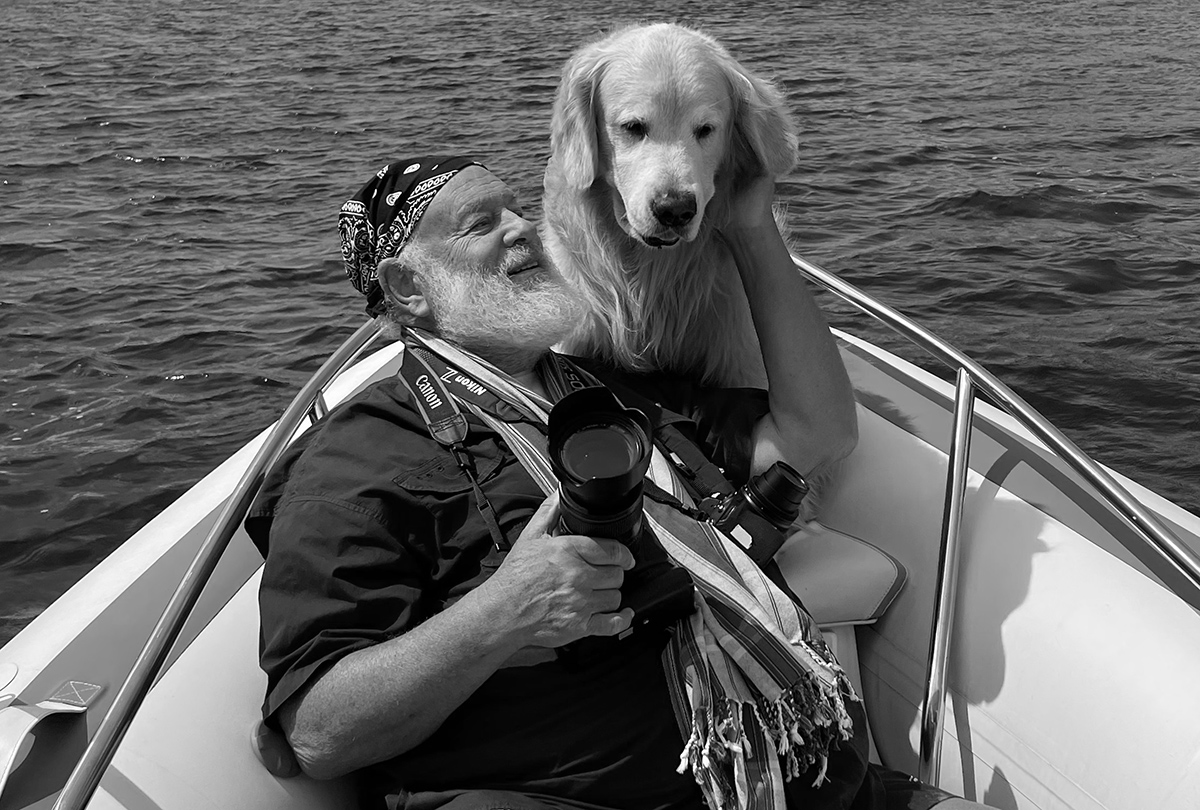
Self Portrait
© 2025 Bruce Weber
First, I asked him why he decided to publish a retrospective book at this particular moment.
“I’m too young for a retrospective (laughs). There is just so many stories that I wanted to tell, and it involved more pages. I had an exhibition in Prague, and we didn’t get the book finished, so I just took my time and lived with it. It’s more like an introspective interview with myself. To really also say “thank you” to all the people I got to work with. Like Franca Sozzani (former editor-in-chief of Vogue Italia, passed away in 2016), Grace Coddington (creative director of Vogue US), Dennis Freedman (fashion editor). A bunch of people. And I wanted to salute Stella Tennant, the model (*Stella Tennant passed away in 2020 at the age of 50. According to her family, the cause of death was suicide). She is a girl I used to work with a lot. And a bunch of other people. My wife. My dogs. Everybody”.
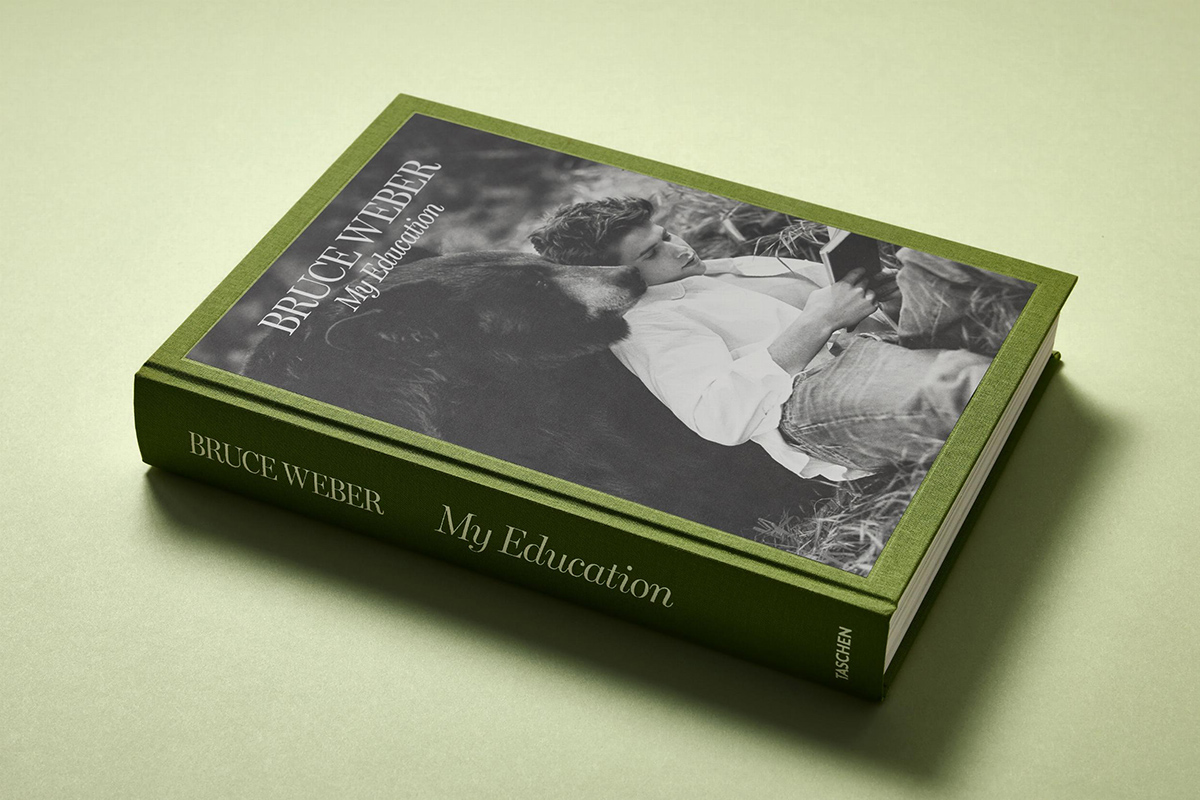
"Bruce Weber. My Education" Cover
Speaking of dogs, Weber vividly remembers that many dog lovers came to see his photo exhibition in Japan. It was during his visit to Japan in 2005, when BRUTUS magazine released its August 15 issue featuring the special “ALL ABOUT BRUCE WEBER”. To coincide with the premiere of his film “A Letter to True”, inspired by his beloved dogs, an exhibition titled “The True Store and Gallery” was held at a special venue in Aoyama.
“A lot of people came with their dogs. Talked to me and everything. Which I loved because I missed mine. I’ve got a chance to work with a lot of Japanese people over the years. I just photographed some pictures, a year and a half ago, with Yohji Yamamoto. I just love his clothes. And I’ve worked for Comme des Garcons for a while. Comme des Garcons had the clothes I was making in their shop in London”.
The retrospective photo exhibition in Prague began at the request of the organizers, but during the preparation and the exhibition itself, Weber was not in good health. He confesses that during that time various thoughts crossed his mind.
“I was not well during it, I got sick. Photographers, we’re a strange breed. We think we can live forever. Because if we photograph a lot of people, then their photographs live. When I was really young, I used to think that I’m never gonna be old. I think I’m still young inside. In my heart and in my head. But I don’t really think how different that is. Most of the youngest people I know were people like Allen Ginsberg, the poet. So young, I couldn’t believe it. I photographed him when he just turned seventy. Jane Goodall. Franca Sozzani. They were like teenagers to me.
The world has changed so much, the fashion world. People are very different. And I feel very much for the young photographers and the models that are starting out. They don’t have the chances we used to have. They would hire somebody new and didn’t care if they had a lot of hit songs or Instagram followers or anything. That didn’t mean anything years ago. It was more about what your character was like, how you expressed it and the style you had. I kind of miss that a lot.
I think that’s why I have a lot of writing in my book, writing was as important to me as photography. I wanted to be able to explain that to people that don’t know that. What it was like. How wonderful it was for me and so many other photographers, illustrators, editors and magazines. It was the Golden Era. Maybe that book represents my Golden Era”.
Whether he photographs models, actors, documentary subjects, or any animals, including dogs, Weber’s work has a consistency that makes it instantly recognizable as his own. He often shoots in black and white and uses film cameras, but that alone does not define his style. His photographs possess a sculptural quality shaped by light and shadow, a sense of intimacy and tension, and, above all, a profound respect for his subjects. How did he manage to establish such a unique style?
“I don’t think so much about my own style. If I have a style, its deep inside of me. I just did a big signing event in New York for my new book. A young gentleman came up to me and said: “I’m twenty-two and I’m having a creative block. What should I do to help myself? To start seeing things differently?” I said, “The truth is, just go out and have a good time, because you must”.
As the title suggests, «My Education» recounts Weber’s invaluable “educational” experiences. In it, he speaks candidly about his encounters in New York with photographic giants such as Richard Avedon, Diane Arbus, and Lisette Model, and about what he learned from each of them.
“When I was studying film at NYU and struggling, I met Diane Arbus. Once, I was at quite a fancy coffee shop with her.” I was just really lucky to have enough money to pay for tea. Back then she photographed a guy called Frederick Eberstadt. I photographed him a lot too, and she said: “Do you want to take pictures like me?”, and I said, “That would never be possible, I’m not you”. She said, “Ok, sit down, let’s talk”. We became tight friends, she called me sometimes at three in the morning. I had just moved in with my wife at that time, and this woman is calling me at three in the morning, it was so crazy! She would tell me that she was depressed.
I felt her struggle very much. It’s a struggle that a lot of photographers have. Am I doing the right thing? Are my pictures what I believe in? Do I still like my pictures? Will they mean something in years to come?
The last time I saw Diane I was on 5th Avenue and she couldn’t cross the street. I just happened to be there, and I said, “Please come, I’ll walk with you”.
Then, when I was studying with Lisette Model, who was her teacher, she told me that one day she got quite a large envelope that they brought to her apartment, and she opened it up and all these rose petals fell on the ground. She then knew that Diane had said goodbye. When they all fell on the floor, she knew that Diane had left” (*In 1971, Diane Arbus took her own life in the bathtub of her New York apartment by slashing her wrists. She was 41 years old).
Lissette was a great teacher, you just couldn’t help falling in love with this elderly lady. I had such a crush on her. We would go to a restaurant in the after my classes, I was the only one that wanted to go! It was crazy. It was in West Village and all the transvestites and drag queens, and the prostitutes, musicians, everybody, all these people were there. I was kind of a square kid, I had gone to school in a Baptist College in Ohio, I’m not Baptist, I’m Jewish, but it was pretty square, so I wasn’t used to a place like this. So, I was like, “Oh, I love being in New York”. I would work on stories for her that most of my classmates wouldn’t like. “I don’t like the depth of field in that picture”, “I don’t like that”, “That’s not pretty, I don’t want to see it”. But she always stuck up for me and she had a fondness for me too.
From Richard Avedon I learned to really have a good time. I used to work a little bit with him as a model when I was a kid. He was funny, he was like a real troublemaker. If people said, “We want this girl to look beautiful”, he’d pour water over her head. Ruin the hair, ruin everything, and you’d go “Wow! Look how amazing she looks”.
Weber dedicates a chapter of his book to the legendary stylist Joe McKenna, with whom he has frequently collaborated, praising his contribution. McKenna kindly offered a comment for this article, in which he recalls how he first met Weber.
“We met at a photo studio on November 11, 1985. Bruce was photographing Uma Thurman and Billy Baldwin. Franca Sozzani was the stylist. They were shooting a Gianfranco Ferre Jeans campaign. It was all very exciting. At one point, he asked the models to run into the shower wearing the clothes to get them wet. they appeared dripping from the shower and Bruce carried on shooting. I was absolutely amazed. It had never occurred to me as a stylist that you could ever wet the client’s clothes! It seemed very daring. He hand-held his camera and moved around, changing lenses, standing on a chair, shooting on the floor, always searching for a ‘different’ picture. I’d never seen a photographer work like that, and haven’t since”.
However, Weber’s career as a photographer has not always been a smooth sailing. In 2017, he was accused by several male models of sexual misconduct that allegedly occurred during past photo shoots. The case was settled in 2021. But as a result of the lawsuit, Weber became distanced from major publishers such as Condé Nast (known for Vogue) as well as from certain luxury brands.
The truth of the matter remains unclear (I urge readers to form their own judgment by carefully reading the series of newspaper articles; not blogs or social media posts). However, one undeniable outcome of this and other sexual harassment scandals involving photographers is that erotic expression has largely vanished from fashion photography as a whole. Since then, almost no one has dared to shoot sexually charged images. I believe this represents a great loss for photographic expression, since the pursuit of eros in visual art is, in my view, a profoundly essential theme. I thus inquired, how in this era of cancel culture, can photographers continue to preserve an erotic element in their work?
“That’s a really good question. If I look at the pictures other photographers take, I want to know what they felt about their subject. I always tell people, “Never marry a photographer”(laughs), I say it to girls and guys too, because they are always falling in love with about ten things a day. Falling in love with the girl, falling in love with the guy, falling in love with a horse, a god, a tree, etc. And they are always like, “I got to meet that guy”, “I’m so crazy about that horse”, or “I want that car, I want to sleep in it”. But the intimacy comes from not having that in my life. I come from a very small town. When I was young, I was really naïve, very shy. I would have to take pictures of people at parties throwing their clothes off, fooling around, so I would go: “How do I do this?” I’ve never had this experience. I had to fantasize, I read books by great authors, men and women, who had a way of describing the physical relationship between people. I always thought it was a very beautiful thing”.
I was photographing for Calvin Klein’s Obsession, I had a girl that I had met in Brazil, her name is Luisa, and I was photographing this guy, Rick. I was so involved in my work, that I didn’t realize I was going to be saying to them, “Take off all your clothes, put a bathrobe on and then walk over to this big swing under this huge, gorgeous tree. Face each other and be so close that you can’t even separate yourselves”. Then they were swinging back and forth, and the wind was blowing on the tree, and just as I finished, I thought, “Oh god, these people did this for me, they did it because they wanted me to be happy, they wanted me to take a beautiful picture”. I remember showing it to Calvin, and he said: “I want to see this in all the magazines around the world”. That was a different time then. I felt responsible for them. I’ve always felt responsible for people that really try to do intimate pictures, whether it was a girl and a guy, two girls or a guy with a guy, I just respected them. I really feel that I started to think about intimacy and how important it was”.
Weber is well known for photographing numerous celebrities, yet his portraits of them are marked by an intimacy that makes them feel as if they were not taken in a professional setting at all.
“Once I was photographing this actress who I really liked, in London. She said to me, “Bruce, you’ve photographed all my boyfriends, they’re actors”, and I said, “I guess I did, I just realized that too”. Then I thought, “I want to know what they felt about you”. I really liked her. I said, “I want you to walk up these stairs, and as you’re walking up, we’re coming back from a late night together and we’ve been drinking, laughing and dancing. I want you to every step take a piece of your clothing off until the top”. So there she was. And I knew why these guys had fallen in love with her. There is a fearsome quality in somebody who trusts you enough to be able to show you completely naked, with your heart, and your soul and with your body”.
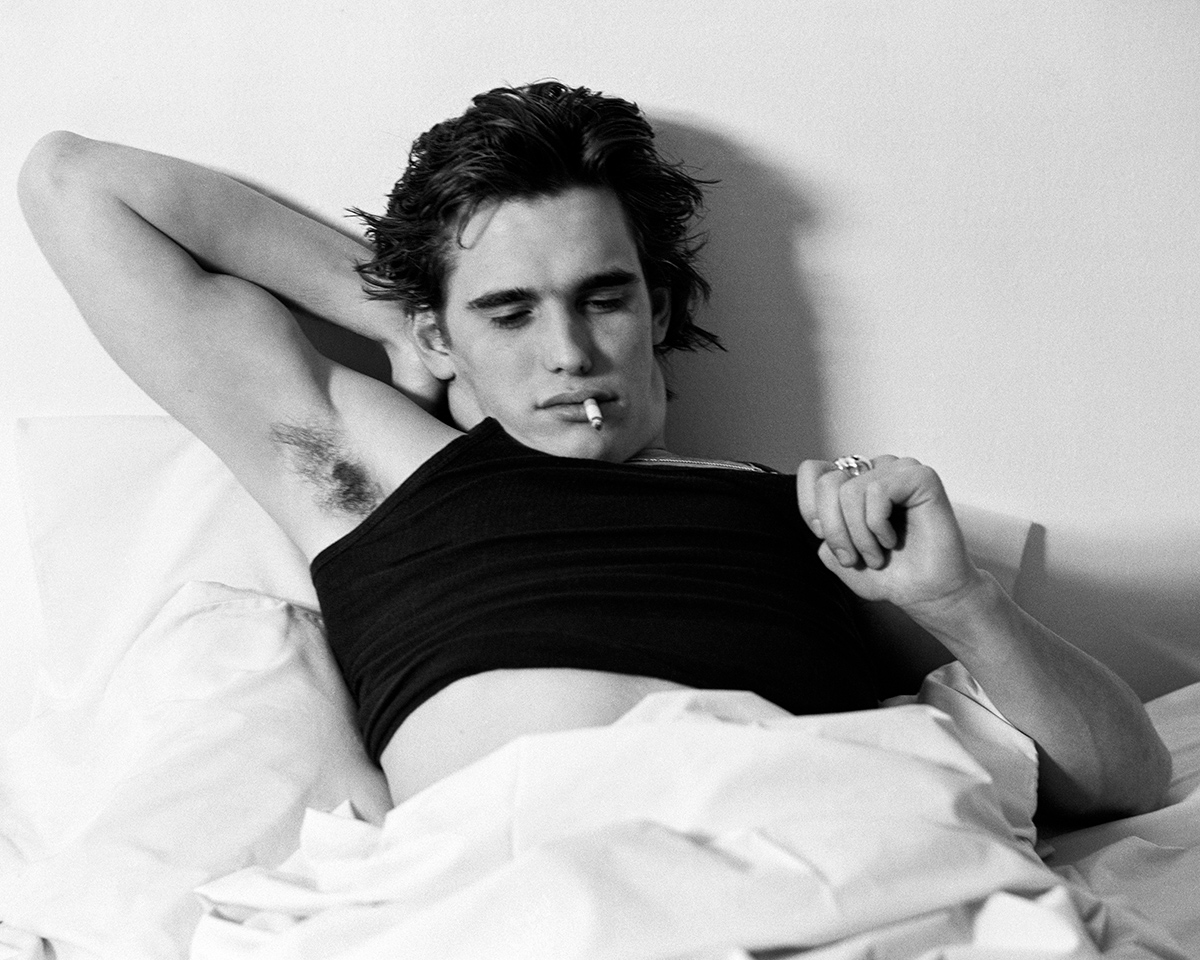
Matt Dillon, New York City, 1983.
“Bruce Weber. My Education” p.252
© 2025 Bruce Weber
Joe McKenna also praises Weber’s ability to regard every subject he photographs in a deeply personal way.
“The fact that Bruce’s photographs are profoundly personal is what sets him apart. You can identify them immediately: landscapes, dogs, portraiture or fashion...Bruce brings a certain quality that is uniquely his”.
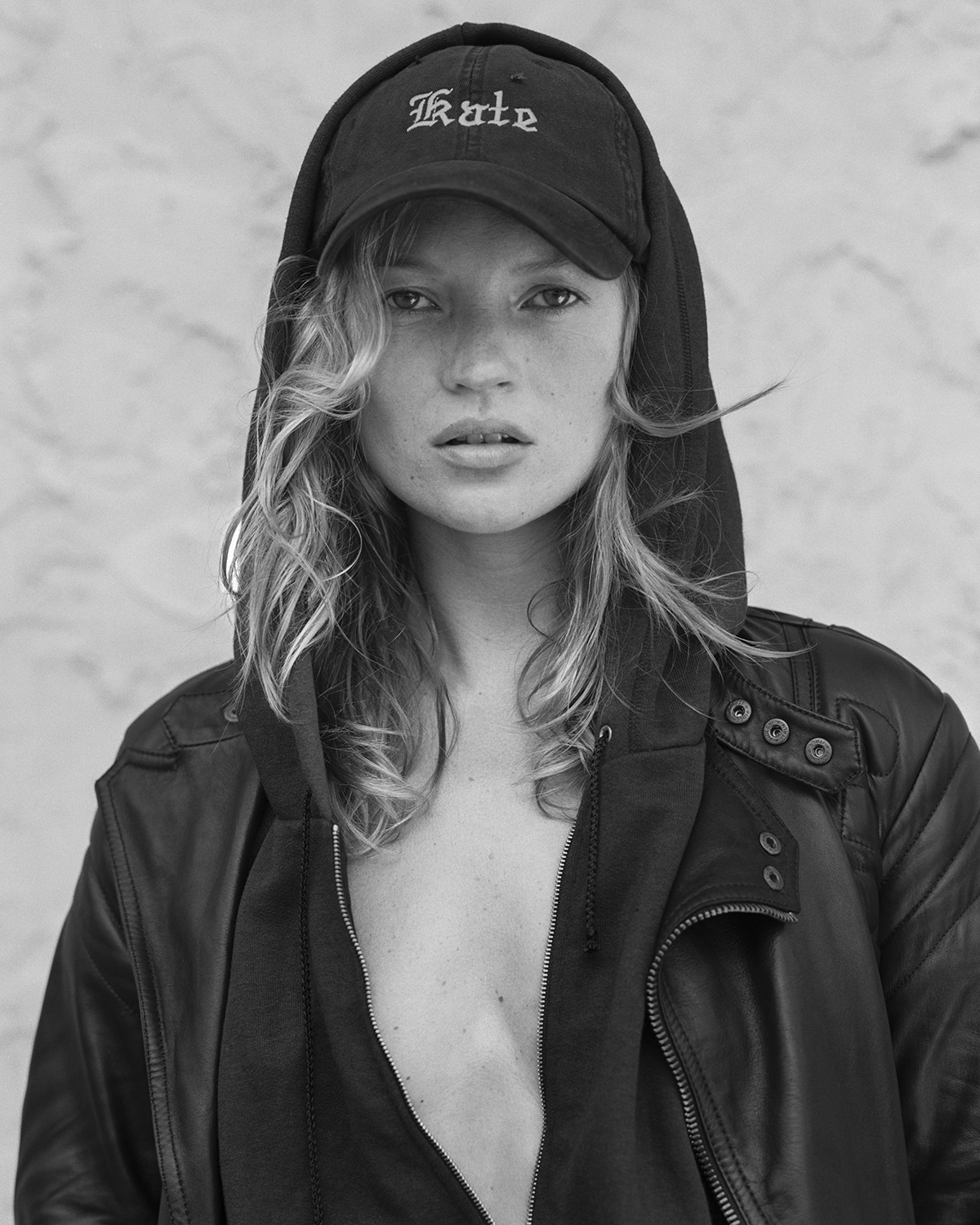
Kate Moss, Miami, Florida, 2003.
“Bruce Weber. My Education” p.163
© 2025 Bruce Weber
However, the current situation in the photography industry is far from looking optimistic. In the world of media, video has become dominant, pushing still photography into the margins. How does Weber perceive this crisis? And what, to him, is the definition of photography today?
“Some of these questions are too deep for me to answer. I can only tell you simply what I feel. I don’t think that I have all the answers, because I still have a way to go. I just hope that my pictures get better, because I’m less afraid of things than I was before.
When I lay in bed at night, and I’m on the road taking pictures, I imagine myself in a bed with the people that I care about in my life. I’m lonely, I’ve been on the road for a month or so. I feel my dogs at the foot of the bed, some are laying in my arms, I have my arms around all these people. You can only hope that your desires and your feelings and what you see with your eyes will mean something to someone.
People say sometimes, “just take the picture”. No, no. Sometimes you’re photographing somebody you don’t like, and yet you love their hands, and you end up just photographing their hands. Then you think about those hands, and you think about what they do with them when they’re talking and everything. All the sudden, you start liking them better. I think, you just have to walk around with your camera, and think: “well, when I turn the corner, maybe this is the next person, I’m going to spend my life with”. You don’t, because you spend three seconds with them taking their picture, but you have that forever, and you end up spending your time with them. I think it’s important to know that your pictures are forever and they are forever for you. And when you are not here anymore, people can look at them and say, how did that photographer feel about this person? Maybe they don’t care, but the photographer knows.
One time I was shooting for Abercrombie. All these couples in the water, they were all kissing. And I just said, “Oh man, I wish when I was young I was in a picture like this, I wish someone had photographed me”. That is how I ended up taking this picture. All of the sudden they came out of the water, they all were friendly, and the guys were nice to the girls, the girls were nice to the guys, two girls were nice to each other and two guys had their arms around each other. And I felt really good, that I had done something nice for these people, but also for myself. We all dried off, and they put their clothes back on. As we were driving away a police car was coming. They said to the production person, “We heard there are a lot of nudes in the water”. He replied, “I didn’t see any!”
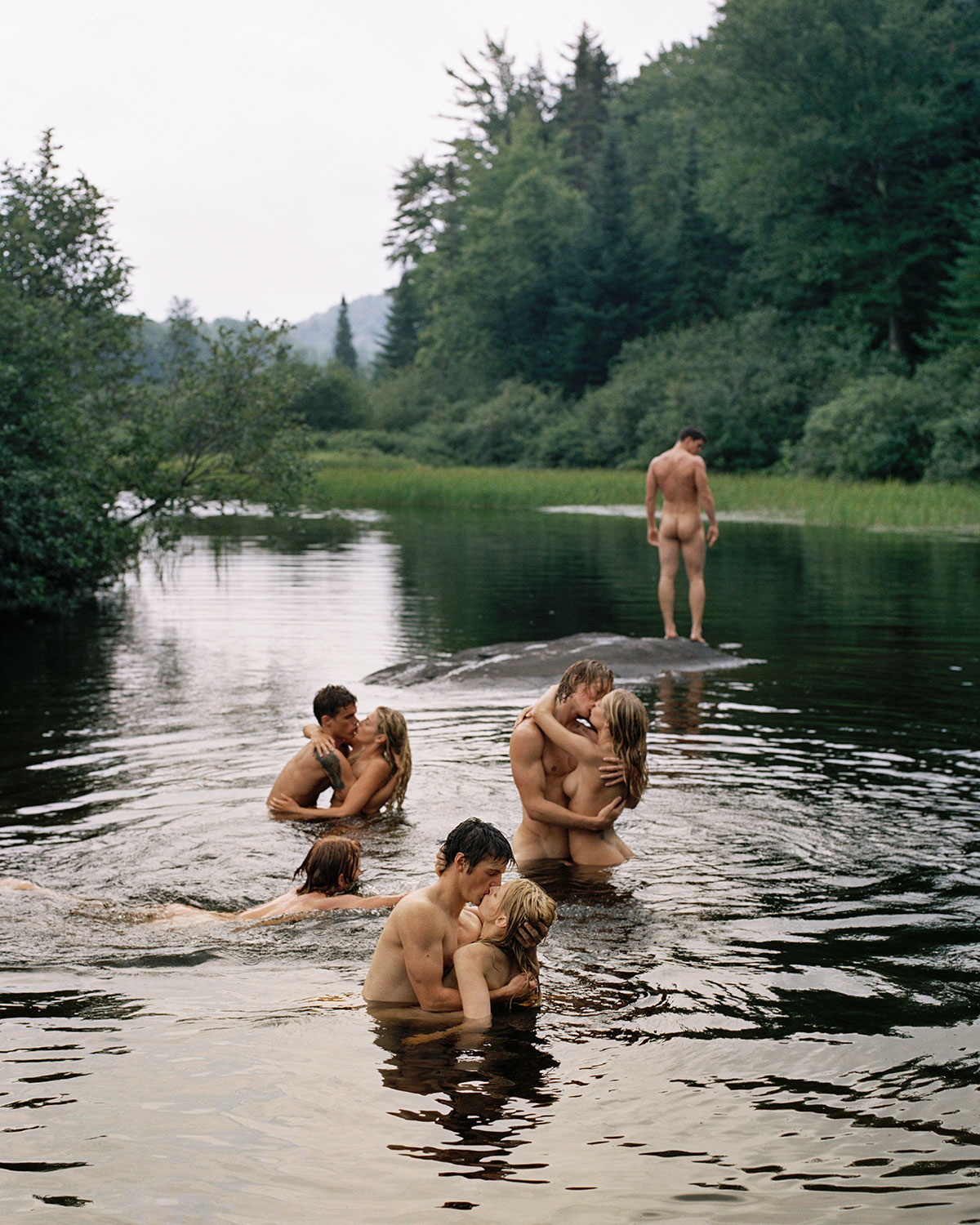
Adirondacks, New York, 2003.
“Bruce Weber. My Education” p.243
© 2025 Bruce Weber
There is no doubt that the monumental “My Education” is going to remain in the history of photography. This book delves deeply into the origins of a photograph per se, traversing various fields while at the same time addressing profoundly personal themes. As its title suggests, Weber declares himself to be an eternal student of photography. But how does he manage to sustain his unwavering passion and respect for it?
“When my dad first came to New York a long time ago, I had just started working for Calvin Klein. I had all these billboards in Times Square. My mom had passed away, and he had his girlfriend there. My dad had a lot of boyfriends and girlfriends, very bohemian. I spoke to him the next morning and said, “Dad when you’re walking onto the theater look up and you’ll see all the billboards I did”. I asked, “Dad, did you see these billboards?” And he said, “Bruce, it’s about time you got serious” (laughs). So, I always feel like I have my dad on my shoulder, telling me to behave, to be proper. I still have that fight in me. The best pictures are the ones that cause problems, in a way”.
My wife Nan (*Nan Bush) and I never had children. I’ve had a lot of dogs in my life. When I was a kid, I wanted ten kids. Then when I grew older, I knew that I never could have that. I would never go to a basketball game with my son, wouldn’t be there if my daughter was in a play. My life is in photography, I would never be home.
But I have my assistants, I’m really proud of them. They don’t have to go on and be photographers. I just want them to be happy. I want them to be proud of whatever they do. They sometimes send me pictures, sometimes I love them, sometimes I don’t like them(laughs). I would ask “Why did you do that?”, and they would say, “Well, I don’t know, they told me I should do that”. “Didn’t I teach you to stand up for yourself and fight?” That’s all I have to say.



